2005 July
About Andrew Cusack
 Writer, web designer, etc.; born in New York; educated in Argentina, Scotland, and South Africa; now based in London.
Writer, web designer, etc.; born in New York; educated in Argentina, Scotland, and South Africa; now based in London. read more
News
Blogs
Reviews & Periodicals
Arts & Design
World
France
Mitteleuropa
Knickerbockers
Argentina
The Levant
Africa
Cape of Good Hope
Netherlands
Scandinavia
Québec
India
Muscovy
Germany
Academica
Oxford? Cambridge?
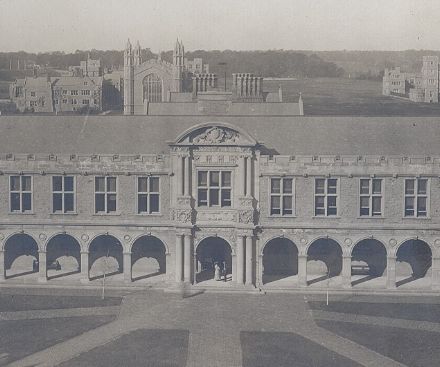
Missouri. A view of the quadrangle of Washington University in St. Louis, to be more precise. If you ask me, they should’ve implemented the 1925 plan to further develop the campus.
St. Vincent Ferrer
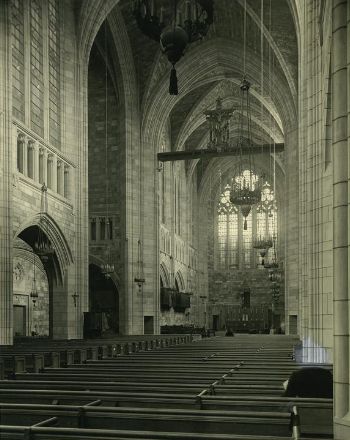
This photo shows the interior of the Dominican Church of St. Vincent Ferrer, designed by Goodhue, before it was fully completed. The stained glass has yet to be installed, and the same goes for the giant reredos which now graces the altar. A more current view is below.
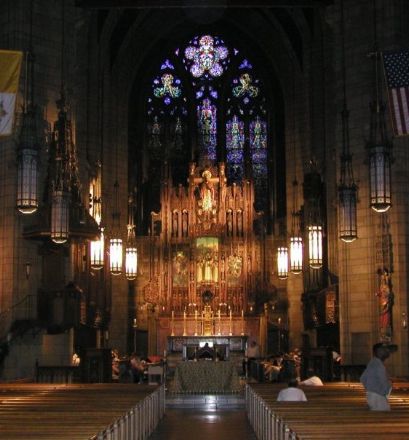
The Goodwin Mansion II
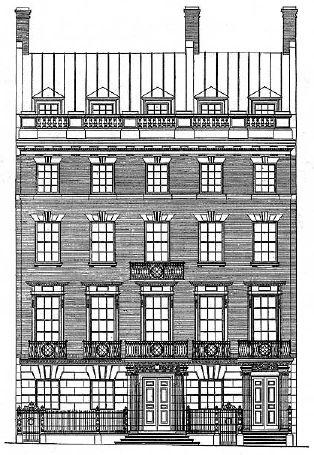
As an appendix to my previous post on the Goodwin mansion, I bring you an elevation of the facade (above) and the original plan of three of its floors (below).

Church of Christ the King, Gordon Square, London
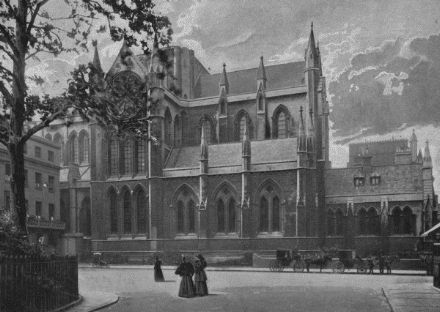
Though a comparitively small and minor sect, assiduous tithing by the members of Catholic Apostolic Church gave that group a number of stunning churches. (Their former church in Edinburgh was the subject of a previous posting).
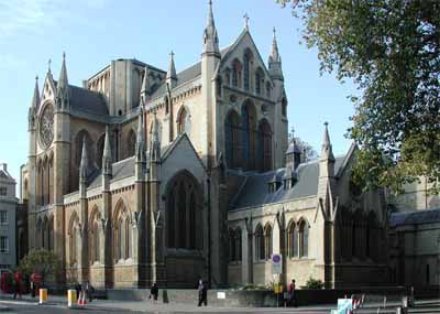
The building currently known as the Church of Christ the King on Gordon Square in Bloomsbury was constructed by the anachronistically-monikered Irvingites from 1853. The superb structure, built from Bath stone, is incomplete, lacking a few bays on the liturgical west of the building which kept the planned façade from being built. It also lacks a crossing tower, but then so does Westminster Abbey, the nave of which is only thirteen feet higher than that of Christ the King. (more…)
The Colonial Colleges
| NAME |
LOCATION | FOND. | CHART. | DENOM. |
| Harvard College (Harvard University) |
Province of Massachusetts Bay |
1636 | 1650 | Puritan |
| College of William and Mary |
Colony and Dominion of Virginia |
1693 | 1693 | Anglican |
| King William’s School (St. John’s College) |
Province of Maryland |
1696 | 1784 | Non-denominational |
| Yale College (Yale University) |
Connecticut Colony |
1701 | 1701 | Congregationalist |
| Moravian College |
Province of Pennsylvania |
1742 | 1863 | Moravian |
| Newark Academy (Univ. of Delaware) |
Delaware Colony |
1743 | 1833 | Non-sectarian |
| College of New Jersey (Princeton University) |
Province of New Jersey | 1746 | 1746 | Presbyterian |
| Augusta Academy (Washington and Lee University) |
Colony and Dominion of Virginia |
1749 | 1782 | Non-sectarian |
| Public Academy of Philadelphia (Univ. of Pennsylvania) |
Province of Pennsylvania |
1749 | 1755 | Non-sectarian |
| King’s College (See below) |
Province of New York | 1754 | 1754 | Anglican |
| Rhode Island College (Brown University) |
Colony of Rhode Island and Providence Plantations |
1764 | 1764 | Baptist |
| Queen’s College (Rutgers University) |
Province of New Jersey | 1766 | 1766 | Dutch Reformed |
| Dartmouth College | Province of New Hampshire | 1769 | 1769 | Congregationalist |
| College of Charleston | Province of South Carolina | 1770 | 1785 | Non-sectarian |
| Salem College | Province of North Carolina | 1772 | 1866 | Moravian |
| Hampden-Sydney College | Colony and Dominion of Virginia | 1775 | 1783 | Presb. |
Note One: “Non-denom.” should be interpreted as Christian but not of a denominational nature. “Non-sectarian” should be interpreted as secular and having little or nothing to do with religion.
Note Two: King’s College in New York has two successor institutions: King’s College in Halifax, Nova Scotia, and Columbia University in New York, New York. The largest portion of the faculty of King’s College in New York fled north and in 1789 refounded the college in Windsor, Nova Scotia. However, the original buildings of King’s College were usurped by a new institution called Columbia College four years earlier in 1784.
King’s College formerly counted its foundation from 1754, while Columbia used the 1784 date. However, this has since switched and Columbia now proudly (though perhaps dubiously) claims 1754 as its foundation while King’s College more safely uses 1789.
Perhaps both institutions have a shared right to the founding date, as the loyal alumni continued their allegiance to King’s in Nova Scotia while the rebellious graduates considered Columbia the rightful heir. As stated, Nova Scotia had more of the people from the original foundation, whereas New York had little more than the physical building and a few of the graduates. I would be inclined to award 1754 to King’s College and 1784 to Columbia, (but then I’m biased against Columbia for being such a fallen institution).
Scruton to America
 No sooner had I read in the Independent that the eminent philosopher Roger Scruton is moving to America than Mrs. Peperium sends me this article from the local paper about the historic home the Scrutons are moving into.
No sooner had I read in the Independent that the eminent philosopher Roger Scruton is moving to America than Mrs. Peperium sends me this article from the local paper about the historic home the Scrutons are moving into.
I am sure Professor Scruton, a keen huntsman, will enjoy the Virginia hunt country. In Britain, of course, the traditional English pasttime of foxhunting is illegal and thus the police must take time from fighting and preventing terrorism to try to enforce ridiculous class-warfare laws.
Dr. Scruton, America welcomes you with open arms!
Canon Bernard Iddings Bell
Warden of St. Stephen’s College in the Hudson Valley of New York
As for what the Church thinks and says, what influence does that have on the handling of American politics, the conduct of American education, the regulation of marriage and divorce, on sex and drink, on how industrial disputes are settled, on how we carry on business?
As a plain matter of fact, religion in this country is generally regarded as a tolerated pastime for such people as happen to like to indulge in occasional godly exercises — as a strictly private matter in an increasingly close-knit and socially acting society — in other words, as something that does not count.
I should like to see the Church recognize that it has been pushed into the realm of the non-essentials, and to persuade it to fight like fury for the right and the duty to bring every act of America and Americans before the bar of God’s judgment.
[Christian leaders] are making valiant claim to such a right and duty; but the great mass of Church members are content to regard the Church as a conglomerate of private culture clubs, nice for christenings, weddings and funerals. Most Church members readily agree with the unchurched majority that it is not the proper business of the Church to criticize America or Americans.
— Canon Bernard Iddings Bell
The 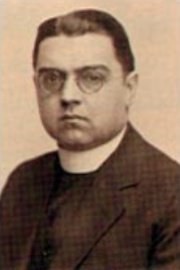 Rev. Canon Bernard Iddings Bell and seems to have been something all too rare in the history of America: a wise and presient Episcopalian cleric (which is not to say we have had any more than a mere handful of wise and presient Catholic clerics in this land).
Rev. Canon Bernard Iddings Bell and seems to have been something all too rare in the history of America: a wise and presient Episcopalian cleric (which is not to say we have had any more than a mere handful of wise and presient Catholic clerics in this land).
Bell served as Warden of St. Stephen’s College – situated on the Hudson River here in New York – from 1919 to 1933, and is widely considered responsible for turning it into what was one of the best collegiate institutions in the country. In 1928, under Bell’s tenure, St. Stephen’s became a college of Columbia University, and this period of the College’s history was highly praised by the great Russell Kirk.
Kirk, in Decadence and Renewal in the Higher Learning, after positing his view of the ideal undergraduate college as a place of classical and liberal learning, takes note of St. Stephen’s. “There have been such colleges in this country,” Kirk wrote. “One such was St. Stephen’s College… when Dr. Bernard Iddings Bell was president. (He told me once that he gave up the presidency when strong objection was raised to his rule that the students should dress decently and rise when professors entered a room.)”
Of course, such arcadian days did not last. Only a year after Bell gave up the wardenship of St. Stephen’s in 1933, the college changed its name from honoring Saint Stephen, the first Christian martyr, to the more secular Bard College honoring the founder of the institution, John Bard.
A mere ten years later in 1944, Bard College became coeducational and as such severed its relationship with Columbia University, becoming independent as a secular, nonsectarian liberal arts college ‘affiliated’ with the Episcopal Church. The once-great college has now declined to such an extent that a professorship there is now named in honor of Alger Hiss, the man who betrayed America to spy for Soviet Russia. Sic transit gloria mundi.
Kirk relates another anecdote of Dr. Bell:
Canon Bernard Iddings Bell once showed a visitor from England about the environs of Chicago. They drove past a handsome Gothic building of stone. “Is that a school?” inquired the visitor.
“Yes– a new one, ‘distressed’ to appear old,” Dr. Bell replied.
“Indeed! Who is the headmaster?”
“There is no headmaster.”
“Curious! A kind of soviet of teachers, I suppose.”
“There are no masters at all.”
“Really? Do the boys teach one another?”
“As yet, there are no students. Here in the United States, we proceed educationally in a way to which you are unaccustomed,” Canon Bell told his friend. “First we erect a building; then we obtain pupils; next we recruit teachers’ then we find a headmaster; and at last we determine what is to be taught. You begin at the other end in England.”
Again, a quote from Canon Bell:
We need to forget the imaginary Christ who has been ours too long and to rediscover the real Christ, the Christ of the prophets and the martyrs and the confessors, the Christ who is not only the lover of souls but also master, a monarch with demands to make in industry, in finance, in education, in the arts, in marriage, in the home; the Christ who is teacher of a social ideology which has eternal validity; the Christ who cries aloud with convincing force, ‘He who would save his life will lose it; only he who is willing to lose his life, can find it.’
Rowing in Pelham Bay
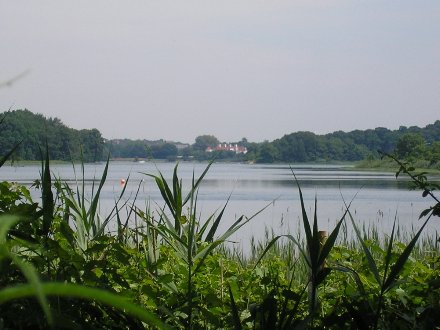
During the past fortnight, I have been learning to row on the lagoon in Pelham Bay Park, a body of water with which I had no previous aquaintance. “Learning to row?” you ask. “But weren’t you in the University of St Andrews Boat Club during your bejant year?” Yes, dear reader, I was a full paid-up member of said body, but I was too busy avoiding lectures, failing courses, and other such frivolities of one’s first year at university to actually row, and only went to circuit training when Ezra Pierce irritated me enough that I felt obliged to give in and head on over. Nonetheless, at the suggestion of a good friend I decided to enroll in this program and have not regretted it at all. Rowing, in short, is addictive, and it is a grand shame that I shall have to wait until at least September in Scotland to get back on the water. (Above, the Travers Island clubhouse of the A.C. can be seen from the far end of the lagoon). (more…)
Downside
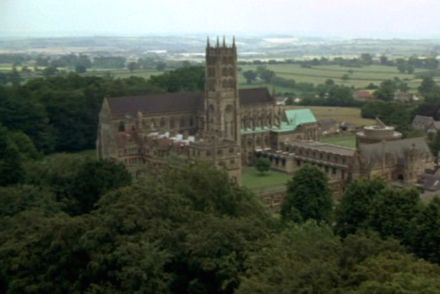
Last night I saw The Hole, a somewhat amusing ‘psychological thriller’ about a bunch of boarding school kids who lock themselves in an old bunker, have a party, then realise they can’t get out, yadda yadda yadda, people die. It was fairly light and worth watching if you’re easily entertained (and I often am). Perhaps the most enjoyable part was a few aerial shots of the Basilica of Saint Gregory the Great, Downside Abbey and School where our own Robert O’Brien will be teaching in the autumn. (The school was given a different name in the film).
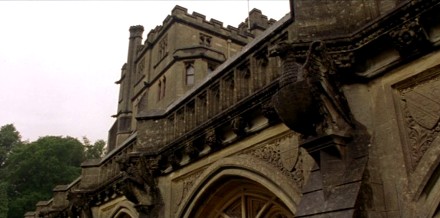
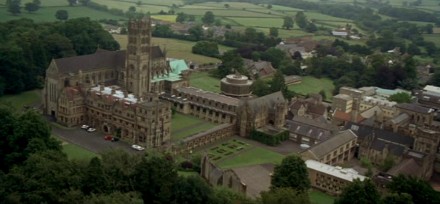

A 250-Year-Old Mace in the Old Dominion
 THE MACE OF the City of Norfolk in the Commonwealth of Virginia is believed to be the oldest civic mace in any of the United States still in use by the city for which it was made. Robert Dinwiddie, the Lieutenant Governor and Commander-in-Chief of the Dominion of Virginia, commissioned the English silversmith Fuller White to make the silver and wood mace for the City of Norfolk, at the time the largest town in the crown colony. The inscription around the base of the bowl of the Mace denotes the generous donation:
THE MACE OF the City of Norfolk in the Commonwealth of Virginia is believed to be the oldest civic mace in any of the United States still in use by the city for which it was made. Robert Dinwiddie, the Lieutenant Governor and Commander-in-Chief of the Dominion of Virginia, commissioned the English silversmith Fuller White to make the silver and wood mace for the City of Norfolk, at the time the largest town in the crown colony. The inscription around the base of the bowl of the Mace denotes the generous donation:
Despite the inscription of 1753, the mace took some time to reach the shores of America, and the minutes of the Norfolk council record the actual presentation:
Fuller White built the mace of eleven interlocking pieces of sterling silver weighing 104 ounces, which centered around a wooden rod. The Norfolk mace measures forty-one-and-a-half inches long from the very bottom of the base to the apex of the crown.
The Royal Arms, depicted in three places on the mace, most prominently outside the bowl and inside the base of the crown, are those of George II, Britain’s second German king known for his poor grasp of the English language.
In several places on the mace are depicted national emblems of George’s realm: the English rose, the Scottish thistle, the Irish harp, and the fleur-de-lis representing the claim to the throne of France still maintained — at least heraldically — at the time. (more…)
Films Recently Viewed
| The Life and Death of Colonel Blimp 1943 Directed by Michael Powell and Emeric Pressburger. A fine film, worth seeing. I’ve spied a few Blimps-in-training at the Mess in Wyvern. Also, Theo Kretschmar-Schuldorff is a heck of a good name for a character. |
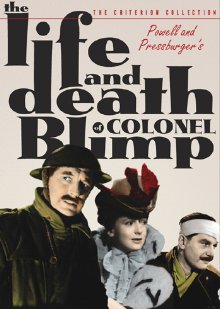 |
| La Grande Illusion 1937 Directed by Jean Renoir. I enjoyed this film greatly. It made me wish I had been a WWI pilot shot down by the Huns just so I could be invited to luncheon with the German officers. Everyone comported themselves well in those days (or at least in the cinema version of those days). According to IMDB, the Viennese Erich von Stroheim had spent so much time in America that he could barely speak German when the film was made. |
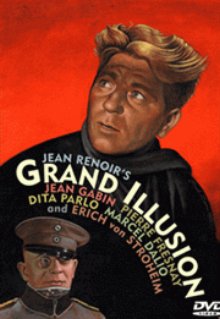
|
| The Birth of a Nation 1915 Directed by D.W. Griffith. Disturbing. The film’s basic premise that the United States was forged as a nation by the white knights of the Ku Klux Klan is balderdash, pure and simple. Still, a powerful and remarkable propaganda film. “It is like writing history with lightning, and my only regret is that it is all so terribly true,” said Woodrow Wilson, whose Southern racism most modern liberals like to ignore. |
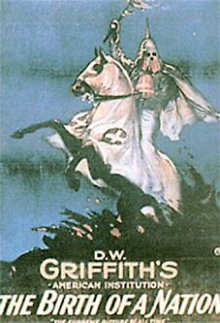
|
| Alexander Nevsky 1938 Directed by Sergei M. Eisenstein, score by Sergei Prokofiev. More brilliant propaganda, this time for the USSR, not the KKK. Beautifully shot, but the battle scene is a tad too long. Though very nationalistic, it is not hard to see the communism behind the film in a number of scenes. Found the only slightly veiled swastikas on the mitre of the Teutonic bishop rather droll. |
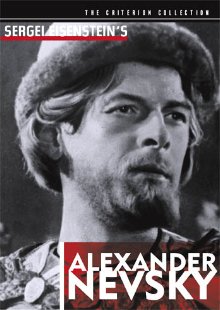
|
| The Battle of Algiers 1965 Directed by Gillo Pontecorvo, score by Ennio Morricone. My second viewing of this splendid film. Colonel Mathieu: “There are 80,000 Arabs in the Casbah. Are they all against us? We know they’re not. In reality, it’s only a small minority that dominates with terror and violence. That minority is our adversary; we must isolate it and destroy it.” And they did. Still managed to lose Algeria though – which was a damn shame for the Algerians. |
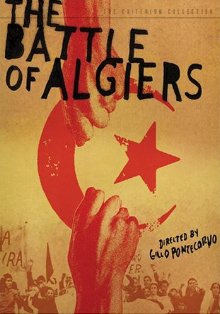
|
Chesterton Remembered
SIR: Your article on G.K. (This England, Summer 1986) brought back a happy personal memory of that great and kindly man. It was 1930 in Rome, where I was a pupil at a “finishing school” – in this case an English convent. G.K. sometimes came to visit our Reverend Mother; we knew him by sight and, once seen, who could forget the huge man in the big black cloak?
Part of our “finishing” process was to be taken round the museums and galleries of the Eternal City. One day we were being shepherded through the Vatican Museum. My friend and I somehow managed to get separated from the rest of our party and in one of the galleries whom should we see but Mr. G.K. Chesterton. He was about to leave so we followed him down the stairs in the hope of being able to get his autograph. At the foot of the stairs he turned. “As we had such young legs”, he said, “could one of us be so kind as to run back to the gallery where he had left his cloak, and would the other see if she could find him a carrozza [a cab, lit. ‘carriage’]?” We needed no second bidding. I raced back up the stairs, found the familiar black cloak where he had left it and triumphantly returned it to its owner. Meanwhile my friend had found a vacant carrozza. G.K. thanked us both, climbed into the carrozza and drove off. In the excitement we had forgotten about the autographs! Next day a letter arrived at our convent. He addressed it to “The Young Ladies suffering education at the convent at No. 10 Via Boncompagni.” Inside was a sheet full of auto-graphs and a little poem.
For you alone did I desire,
Who brought the prophet’s mantle down
And called his chariot of fire!
I have the precious autograph still and what a strange Chinese-looking affair it is!
— MRS. L. RIPLEY, BRIGHTON
Chartres 2005
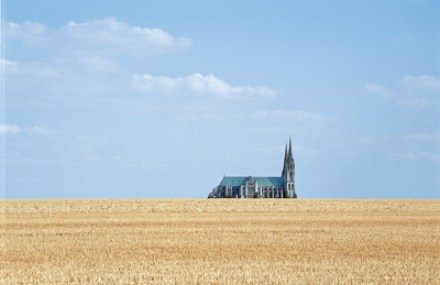
Various sites have put up photos from this year’s annual traditionalist Pentecost pilgrimage to Chartres, and I thought, as I did last year, I would gather a few of them and present them to you. (more…)
The Carbuncle Responds
Well our favorite Jewess-turned-evangelical-turning-Catholic, Miss Dawn Eden, picked up on the complaints yours truly had about the Brooklyn Museum in her weekly Daily News column (scroll down, “A Boil Grows in Brooklyn”, NY Daily News, July 10, 2005). Well folks, someone at the B.M. must’ve been reading because later in the week upon collecting our mail I received an envelope from none other than the Brooklyn Museum itself.
The contents? Four free guest passes and a brief missive:

I laughed out loud when I read it. I’m glad they have a sense of humor, though it doesn’t make up for the new entrance. Nonetheless, I shall take them up on their offer. Perhaps the carbuncle is not quite as grievous in the flesh. Perhaps it’s worse. It remains to be seen.
The last time I went to Brooklyn (so far as I can remember) was to Fort Hamilton, one of the few remaining military installations in the city, back in 2000. It was Independence Day and my uncle was leading the artillery battery firing the salutes at the incoming tall ships for OpSail 2000.
The Old Irish Parliament House
Please see the updated article of the Irish Houses of Parliament, College Green, Dublin here.
The ‘New South’ Scorns an Old Mace
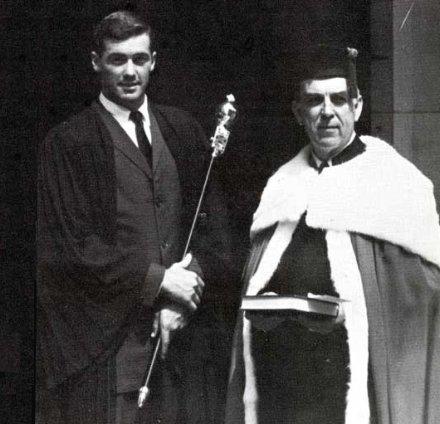
George Hart, President of the Order of Gownsmen, bears the University Mace for the Vice-Chancellor, Dr. McCrady
“The recent convocation at Sewanee’s All Saints’ Chapel was a majestic display,” writes the Atlanta Journal-Constitution. “University hierarchs in medieval garb spoke Latin, their words echoing throughout the nave. New honor students donned black robes, marking their entrance into the prestigious Order of Gownsmen. Everyone sang: “Alma Mater, Sewanee, My glorious Mother ever be. (more…)
Risen from the Ashes
by Austin Ruse
Sursum Corda, Summer 1998
The first wholly traditional Catholic parish structure built since Vatican II could not be situated in a more central location, at a more opportune time. New York is enjoying an astounding 1990s rejuvenation, bulging with tourists and new business. St. Agnes Church is at the center of it all, in midtown Manhattan, near Grand Central Station.
 Only at St. Agnes in New York City can an orthodox churchman be attacked from the right. Yet there they were, a dedicated band of angry young people picketing Msgr. Eugene V. Clark at Mass only one week after St. Agnes had burned nearly to the ground in late 1992. Their charge? That the good Monsignor intended to replace the old brick Gothic structure, now ruined, with what they called a “Swedish-Igloo-Modern.” Monsignor Clark never gets mad, but he got mad that day – although today he looks back on the incident with amusement. He even saved one of their flyers and is considering having it framed.
Only at St. Agnes in New York City can an orthodox churchman be attacked from the right. Yet there they were, a dedicated band of angry young people picketing Msgr. Eugene V. Clark at Mass only one week after St. Agnes had burned nearly to the ground in late 1992. Their charge? That the good Monsignor intended to replace the old brick Gothic structure, now ruined, with what they called a “Swedish-Igloo-Modern.” Monsignor Clark never gets mad, but he got mad that day – although today he looks back on the incident with amusement. He even saved one of their flyers and is considering having it framed.
Did those excitable young men and women actually live within the parish boundaries of St. Agnes? No. But then hardly anybody actually lives in the East 40s. St. Agnes has maybe 100 to 150 residential parishioners. Nobody really cares, either; and this is one of the charms of St. Agnes. It is a commuter church located next to one of the busiest ports of call in the world, Grand Central Station. St. Agnes Church is a place that is searched out, discovered, chosen. To many it seems that St. Agnes chooses them.
But there was that awful day when many thought it might close. (more…)
The Vicious Carbuncle of Brooklyn
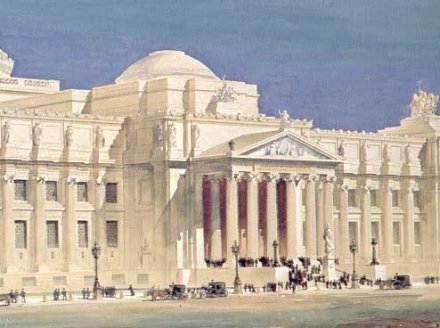
The Brooklyn Museum ought to be ashamed of itself. Though frequently overshadowed by its civic compatriot, the world-class Metropolitan Museum of Art in Central Park, this institution in Brooklyn’s Prospect Park is still considered one of the best museums in the United States. Its overall design was the work of the renowned McKim, Mead, and White who planned a sprawling beaux-arts palace for what was then known as the Brooklyn Insitute of Arts and Sciences. Their own illustration of the final design can be seen above and below (click the below image for a larger version). (more…)
His Holiness and His Most Eminent Highness
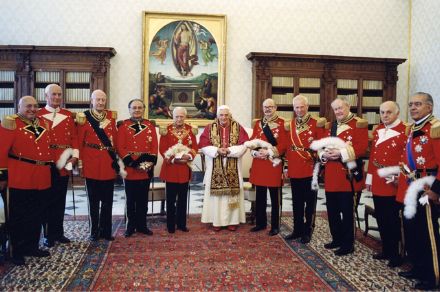
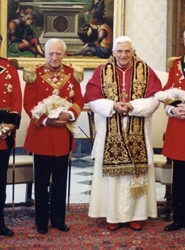 By special request, I bring you photos of the recent audience of His Holiness Benedict XVI, Bishop of Rome, Vicar of Jesus Christ, Successor of the Prince of the Apostles, Supreme Pontiff of the Universal Church, Patriarch of the West, Primate of Italy, Archbishop and Metropolitan of the Roman Province, Sovereign of the State of the Vatican City, Servant of the Servants of God (to use his full title) with His Most Eminent Highness, Fra’ Andrew Willoughby Ninian Bertie, Prince and Grand Master of the Sovereign Military and Hospitaller Order of St. John of Jerusalem, of Rhodes, and of Malta, Most Humble Guardian of the Poor of Jesus Christ (likewise, to use his full title) along with the Sovereign Council of the said order. According to ecclesiastical protocol the Grand Master, though merely a vowed religious, is accorded a dignity equal to that of a cardinal. His Holiness received the Grand Master and Sovereign Council on June 24, 2005, the Feast of St. John the Baptist, who is the patron saint of the Order. The Grand Master was also greeted on April 24 of this year, when the photograph below was taken.
By special request, I bring you photos of the recent audience of His Holiness Benedict XVI, Bishop of Rome, Vicar of Jesus Christ, Successor of the Prince of the Apostles, Supreme Pontiff of the Universal Church, Patriarch of the West, Primate of Italy, Archbishop and Metropolitan of the Roman Province, Sovereign of the State of the Vatican City, Servant of the Servants of God (to use his full title) with His Most Eminent Highness, Fra’ Andrew Willoughby Ninian Bertie, Prince and Grand Master of the Sovereign Military and Hospitaller Order of St. John of Jerusalem, of Rhodes, and of Malta, Most Humble Guardian of the Poor of Jesus Christ (likewise, to use his full title) along with the Sovereign Council of the said order. According to ecclesiastical protocol the Grand Master, though merely a vowed religious, is accorded a dignity equal to that of a cardinal. His Holiness received the Grand Master and Sovereign Council on June 24, 2005, the Feast of St. John the Baptist, who is the patron saint of the Order. The Grand Master was also greeted on April 24 of this year, when the photograph below was taken.
If we have any more Order-of-Malta-related posts, a whole category will have to be devoted to them!
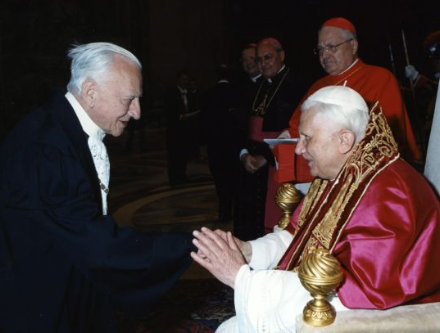
Happy Dominion Day!
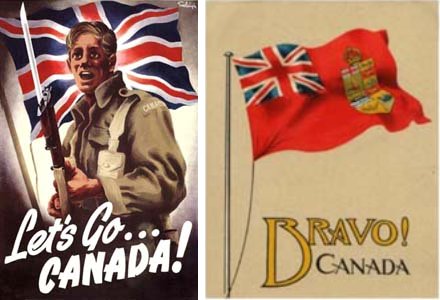
A day late, I hope all our Canadian friends and neighbours have enjoyed a happy and blessed Dominion Day. In tribute to the Great White North, I present our dear readers with that wonderful song, the anthem of anglophone Canada – thistle, shamrock, rose entwined – the Maple Leaf Forever. It is one of my favorite tunes, and were I governor of this fair land, after making coattails and top hats de rigeur for gubernatorial events, I think I’d steal the notes and make a new song called Empire State Forever.
So all that remains is to say long live Canada and God Save the Queen!
[Click here for MP3 audio file]
In Days of yore, from Britain’s shore,
Wolfe, the dauntless hero came,
And planted firm Britannia’s flag,
On Canada’s fair domain.
Here may it wave, our boast, our pride,
And joined in love together,
The thistle, shamrock, rose entwined,
The Maple Leaf forever!
The Maple Leaf, our emblem dear,
The Maple Leaf forever!
God save our Queen, and Heaven bless,
The Maple Leaf forever!
At Queenston Heights and Lundy’s Lane,
Our brave fathers, side by side,
For freedom, homes, and loved ones dear,
Firmly stood and nobly died;
And those dear rights which they maintained,
We swear to yield them never!
Our watchword evermore shall be,
The Maple Leaf forever!
The Maple Leaf, our emblem dear,
The Maple Leaf forever!
God save our Queen, and Heaven bless,
The Maple Leaf forever!
Our fair Dominion now extends
From Cape Race to Nootka Sound;
May peace forever be our lot,
And plenteous store abound:
And may those ties of love be ours
Which discord cannot sever,
And flourish green o’er freedom’s home
The Maple Leaf forever!
The Maple Leaf, our emblem dear,
The Maple Leaf forever!
God save our Queen, and Heaven bless,
The Maple Leaf forever!
On merry England’s far-famed land,
May kind Heaven sweetly smile;
God bless Old Scotland evermore,
And Ireland’s Emer’ld Isle!
Then swell the song, both loud and long,
Till rocks and forest quiver,
God save our Queen, and Heaven bless
The Maple Leaf forever!
The Maple Leaf, our emblem dear,
The Maple Leaf forever!
God save our Queen, and Heaven bless,
The Maple Leaf forever!
Search
Instagram: @andcusack
Click here for my Instagram photos.Most Recent Posts
- Silver Jubilee November 21, 2024
- Articles of Note: 11 November 2024 November 11, 2024
- Why do you read? November 5, 2024
- India November 4, 2024
- The Lithe Efficiency of the Old Constitution November 4, 2024
Most Recent Comments
Book Wishlist
Monthly Archives
Categories


